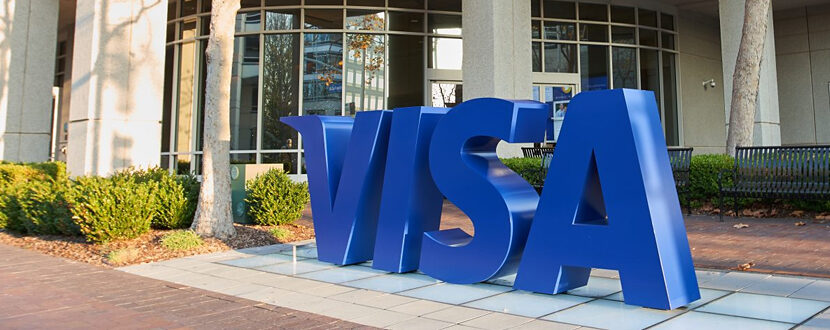The new Visa Rapid Dispute Resolution (RDR) service allows merchants to issue refunds to customers and avoid many associated chargeback costs. Some issuers are already working with Visa RDR as of this writing. However, the vast majority of issuers and acquirers are expected to go live in April 2021 alongside Visa Resolve Online.
Banks should familiarize themselves with the new process before the transition is complete. This will enable them to be better-prepared to help their clients fully understand how the service works.
What is Visa RDR?
Rapid Dispute Resolution is meant as an upgrade to Visa’s existing chargeback resolution platform, the Chargeback Dispute Resolution Network (CDRN). In effect, Visa RDR allows merchants to set rules and pre-select which disputes they’d like to automatically refund. This allows them to resolve customer disputes while also preventing some chargebacks.
The goal of RDR is to help banks quickly and efficiently serve their clients, while providing a fairer standard for resolving disputes. Banks can free up substantial resources currently allocated to the chargeback process.
For their part, merchants will be able to address cardholders’ concerns without suffering the full financial impact of a chargeback. Also, any dispute resolved this way will be identified as an RDR-resolved transaction instead of a chargeback; thus, it won’t count against their chargeback ratio.
According to Visa, the move to this new system should be a smooth process. However, there are still certain steps that acquirers need to implement, such as reclassifying data and developing systems to distinguish the newly-created RDR classification from disputes.
Benefits of RDR
One of the greatest benefits of Rapid Dispute Resolution is the possibility for reduced chargeback issuances.
Let’s assume that a customer disputes a transaction. Rather than going directly to the chargeback process, the issuer can automatically consult a pre-determined rule set to decide how to handle the transaction. The rules used to determine which disputes to refund are based on a variety of factors, including:
- Authorization date
- Transaction value
- Original transaction date
- Chargeback reason code
- Product
- Card issuer
- Currency/region
Merchants can outline which transactions to refund automatically based on parameters set for these indicators in advance.
RDR analyzes these rules and automatically decides whether to refund the transaction on the merchant’s behalf. This frees up merchant resources and makes it easier to avoid breaching Visa chargeback thresholds (0.9% chargeback ratio and 100 chargebacks per month). The merchant can use RDR to get their chargeback situation under control in a short amount of time.
This means substantial savings on overhead for acquirers, as their merchants will see fewer chargebacks. Plus, they may be able to retain merchants who would otherwise pose a liability risk due to excessive chargeback issuances.
Issuers could save plenty of cash as well; the ability to automatically refund purchases can cut down on the number of transactions they write-off. Also, fewer chargebacks issued means less time reviewing disputes and dealing with representments.
Downsides of RDR
While there are many positive aspects to Visa Rapid Dispute Resolution, it’s also important to be aware of the downsides.
Let’s assume that a cardholder files an illegitimate dispute (commonly known as “friendly fraud”), and it progresses to the chargeback phase. The representment process allows the merchant to fight back and hopefully overturn the chargeback, recovering lost revenue in the process.
RDR can’t do much if a cardholder disputes a valid transaction, and the claim happens to match the perimeters set by the merchant to refund the transaction. Representment is not an option after a refund. Thus, it may actually be easier for customers to get away with false claims and cyber shoplifting, in some cases.
When merchants use RDR, they will receive daily updates on refund information from Visa. This gives a better impression of why customers dispute charges, and how to prevent similar issues in the future. Of course, this only applies in the future; it can’t help protect revenue in the present.
Merchants may also need to consider investing in other solutions to help reconcile new refund data if using a CRM or legacy system to manage customer data. If data is mishandled, for example, it can result in double refunds or other mistakes resulting in additional losses for the merchant.
Helping Merchants Use RDR Effectively
Ultimately, Visa Rapid Dispute Resolution can help banks and merchants in the fight against chargebacks. RDR should be a consideration for every merchant, but especially those for whom any of the following are true:
- They operate in a high-risk vertical or sales model
- They have breached—or are close to breaching—Visa chargeback thresholds
- A significant portion of their transactions are for low-ticket items
- They’re currently enrolled in the Visa Chargeback Monitoring Program
If a merchant is considering RDR, they will need to decide which rules to apply for automatic refunds. For example, a dispute with a legitimate basis in criminal fraud or merchant error ought to be refunded. Customized rules will need to be set that take the merchant’s unique needs into the equation.
Acquirers should remind clients to keep tabs on their refund rate, even after they’ve entered the program. If refunds begin to surge and chargeback thresholds are not in danger of being exceeded, they should consider refining their rules or opting out altogether.
We also recommend against waiting until the last minute to adapt to this new process. Fortunately, financial institutions can get RDR integration underway today by reaching out to the professionals at Fi911.
We have the insights, technologies, and expertise that acquirers need to help their merchants adapt not only to Visa RDR, but every new change coming to the payments industry. With Fi911, institutions can provide more value to their clients while reducing costs, streamlining operations, and increasing operational efficiency. Click here and get started today.



